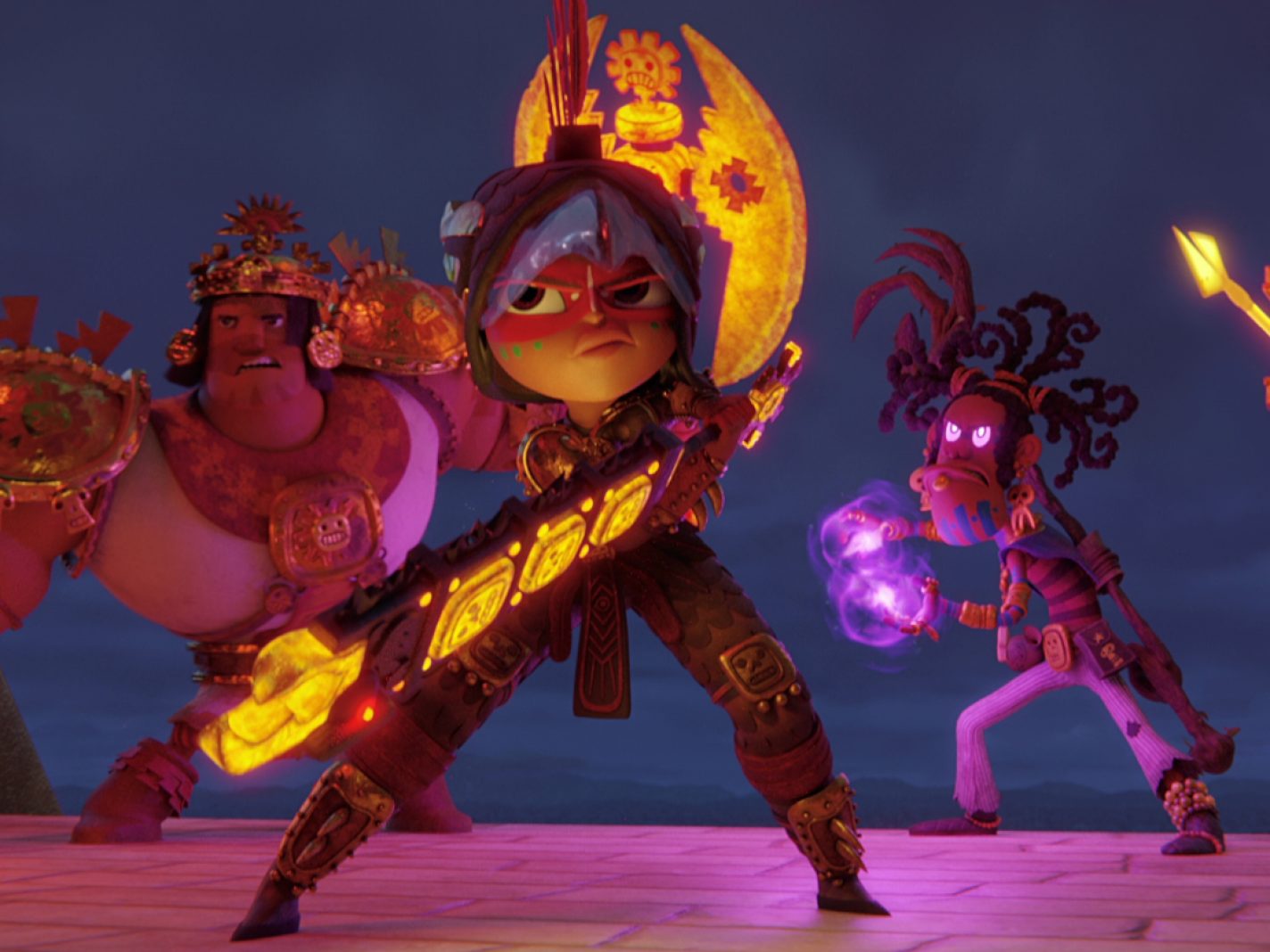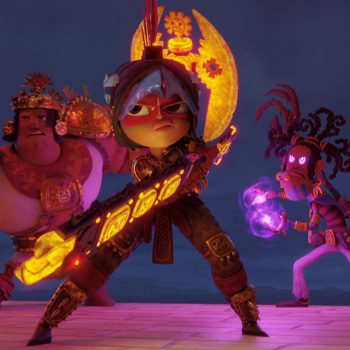Netflix’s latest animated adventure Maya and the Three may feature a who’s who of Latine talent but don’t let the cross-diaspora casting fool you. This show is decidedly Mexican. We’re talking about a series that has an eagle land on a cactus and eat a snake in its opening sequence. And then REPEATS it later.
This shouldn’t come as a surprise because Maya and the Three is the brainchild of Mexican/Mexican Americans. Specifically, Jorge Gutierrez (El Tigre: The Adventures of Manny Rivera, The Book of Life) created the show, Sandra Equihua (who is the first Latina to win an Emmy for Outstanding Individual Achievement in Animation for El Tigre) lead character design, and Silvia Olivias (head writer of Elena of Avalor, aka Disney’s first Latina princess) was the head writer.
But how exactly does their Mexican culture show up? In more ways than I can count! That said, I did round up some of the many ways Maya and the Three honors Mexican culture.
1
Ideas Around Death
One of our biggest exports (after fire-roasted salsas and cheap labor) is the Mexican concept of death. It’s not that we’re obsessed with it (although our sugar skull habit may point otherwise) but rather that we see it as part of life. Maya and the Three has all that; calavera imagery, a rich underworld, and more. In the show, death is real and omnipresent, and final but that doesn’t mean the living have no access to the deceased. Rather, departed ancestors continue to guide their descendants in ways big and small.
2
The Intensity of the Imagery
Maya and the Three is visually stunning with no minimalism insight. In fact, I’d describe its aesthetic as ‘chaotic Mexican.’ Think mole’s richness and complication (20 ingredients or more) but in visual form. So you have countless colors in countless shades on countless textures. The proportions, shapes, and forms manage to surprise long after the world is set up. Even the characters’ movement brings a sort of frenetic energy, demanding attention again and again. It’s the Mexican affection for drama translated to animation and turned up to eleven.
3
Tying Love to Sacrifice
I don’t want to give anything away but let’s just say pretty much every character in Maya and the Three has to sacrifice something for the ones they love. It’s so common, it might as well be THE way of showing love, whether that love is familial or romantic. As anyone knows who’s ever been guilted by a Mexican elder, the combination of love and the expectation of sacrifice is a heavy one in our culture.
4
The Language
I guess this one is more Chicano than Mexican but bear with me. Maya and the Three is an English-language production but the characters speak a Spanglish that’s familiar to Latines everywhere. I’d go so far as to say that the show’s native language is the sort of bilingual-light that’s become the shorthand marker for our communities. And that language can trace its roots to the former Mexican states of Arizona, California, Colorado, Nevada, New Mexico, Texas, and Utah, where the first big population of Latines had to figure out how to adapt to gringo government and the English that came with it.
5
Uplifting the Indigenous
Teca princess Maya grows up in a castle that bears a striking resemblance to Tenochtitlan. She consults an Aztec calendar. She fights Indigenous Gods. Her counterparts are meant to represent other ancient civilizations – but only a Mexican could cast the Incas as the dumb jocks of the pre-conquest world (what can I say, we’re pretty into ourselves). But perhaps what’s most Mexican about all this Indigeneity is how it manages to valorize the culture without lifting up the actual people – you know the Indigenous folks that live and breathe and suffer discrimination in Mexico and throughout the Americas today. You see Maya and the Three in all its beauty, humor, and fun is still a celebration of a flawed culture. So yeah, it brings those flaws with it.




